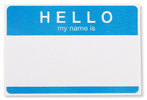A common trap we high school teachers fall into is thinking that our kids walk in our classrooms as blank slates. We have pacing guides and unit plans, and we need to start at the beginning and end at the end.
Question to ponder...What do our students already know or partially know coming into our classes? We often forget about one of our most valuable resources in our classrooms -- student prior knowledge. Pre-tests are a great way to begin identifying what kids know, kind of know, and have no clue about.
Think about how precious time is for us. Why would we spend unnecessary time on ideas, concepts, or skills they already have when we really need to work on those they don't? Talk about being efficient with our time!
Also, why be a lone wolf? Develop a pretest with your PLC so you can look at patterns and share ideas on how to address them.
Don't forget...even the Lone Ranger had Tonto and Silver.
Click here for a great Common Assessment Development Guide that helps take the guesswork out of making those assessments.
Question to ponder...What do our students already know or partially know coming into our classes? We often forget about one of our most valuable resources in our classrooms -- student prior knowledge. Pre-tests are a great way to begin identifying what kids know, kind of know, and have no clue about.
Think about how precious time is for us. Why would we spend unnecessary time on ideas, concepts, or skills they already have when we really need to work on those they don't? Talk about being efficient with our time!
Also, why be a lone wolf? Develop a pretest with your PLC so you can look at patterns and share ideas on how to address them.
Don't forget...even the Lone Ranger had Tonto and Silver.
Click here for a great Common Assessment Development Guide that helps take the guesswork out of making those assessments.


 RSS Feed
RSS Feed
